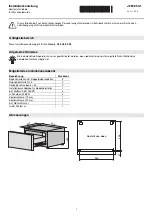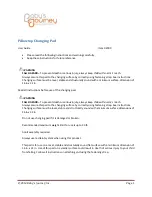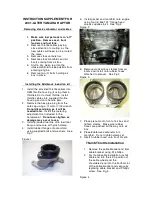
8
FATTORE DI SERVIZIO FS
SERVICE FACTOR FS
Il fattore di servizio FS è il parametro che
traduce in un valore numerico la gravosi-
tà del servizio che il riduttore è chiamato
a svolgere, tenendo in considerazione,
con sufficiente approssimazione della
variabilità del carico e degli eventuali urti
cui è sottoposto il riduttore per un deter-
minato tipo di servizio.
Il grafico della tabella, permette di sce
-
gliere il fattore di servizio FS una volta
stabilito i seguenti parametri:
• natura del carico in funzione del fattore
di accelerazione delle masse K: A-B-C
• durata di funzionamento giornaliero:
ore/giorno (h/d)
• frequenza di avviamento: avviamen
-
ti/ora
• classe di carico:
A
- K ≤ 0.30 (
carico uniforme)
B
- 0.30<K≤3.0
(carico con urti moderati)
C
- 3<K≤10 (
carico con forti urti)
Eventuali valori intermedi di FS potranno
essere ottenuti per interpolazione.
Fattore di accelerazione delle masse K
Serve per la determinazione del tipo di
carico, e si ricava dalla relazione:
dove:
Ju [Kgm
2
]: momento d’inerzia dinamico
delle masse esterne
Jm [Kgm
2
]: momento d’inerzia del moto-
re elettrico
Numero avviamenti/ora -
Number of starts and stops hour
- Anzahl der Starts /Stops pro Std
h/d
Tab.1
The service factor FS is a parameter that
translates the operational burden of the
gear reducer when running into a numer-
ical value, at the same time taking into
consideration (with sufficient approxi
-
mation) any load variations or eventual
shocks that the gear reducer might incur
for a certain type of duty.
The graph below will allow you to choose
the service factor FS once you have es-
tablished the following facts:
• type of load based on the acceleration
factor of the masses K: A-B-C
• operational running times in hours
per day: h/d
• number of starts and stops per hour
• type of load:
A - K ≤ 0.30 (
uniform load)
B - 0.30<K≤3.0
(moderate shock load)
C - 3<K≤10 (
heavy shock load)
Any eventual FS intermediate values
can be obtained by interpolation.
Acceleration factor of masses K
Used to determine the type of load, it can
be obtained from the following equation:
where:
Ju [Kgm
2
]: dynamic moment of inertia of
the external masses
Jm [Kgm
2
]: electric motor moment of in-
ertia
Der Betriebsfaktor fs gibt die Betriebsbe-
lastung durch einen numerischen Wert
wieder.
Diesen Wert sollte das Getriebe unter
Beachtung der Belastungsvariabilität
und den möglichen auftretenden Stößen
erfüllen.
Die Tabelle ermöglicht die Auswahl des
Betriebsfaktors (FS), nachdem folgende
Parameter einmal festgesetzt worden
sind:
• Die Belastungsart ist abhängig von
den Massenbeschleunigungsfaktoren
K: A-B-C
• Tägliche Getriebelaufzeit (h/d)
• Starthäufigkeit. Starts/Std
• Belastungstypen:
A
- K ≤ 0.30 (
gleichmäßige Belastung)
B
- 0.30<K≤3.0
(leichte Stoßbelastung)
C
- 3<K≤10 (
starke Stoßbelastung)
Dazwischen liegende Werte können
interpoliert werden.
Massenbeschleunigungsfaktor K
K dient dazu, den Belastungstyp zu be-
stimmen. Er läßt sich aus folgender Glei-
chung ableiten:
Hier gilt:
Ju [Kgm
2
]: Dynamischer Massenträg-
heitsmoment der angetriebenen Massen
Jm [Kgm
2
]: Massenträgheitsmoment des
Elektromotors
BETRIEBSFAKTOR FS
Ju
Jm
K =
3
www.tramec-getriebe.de
Summary of Contents for CV 1 Series
Page 51: ...51 www tramec getriebe de ...
Page 114: ...114 Note www tramec getriebe de ...
Page 115: ...115 Note www tramec getriebe de ...









































